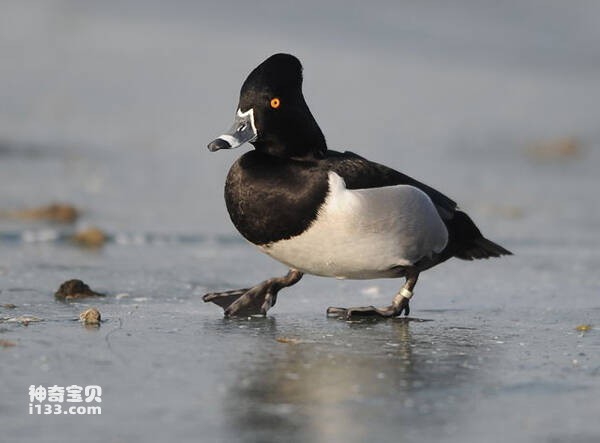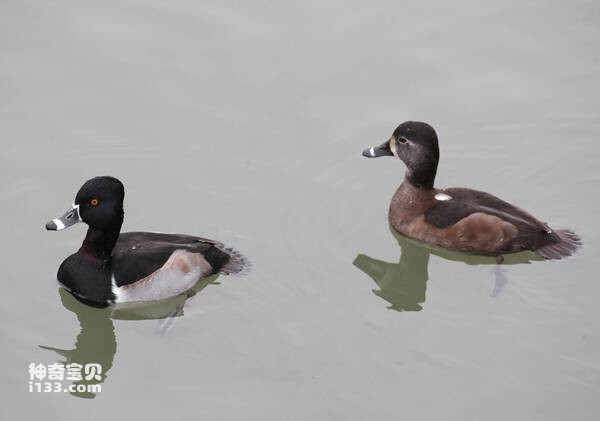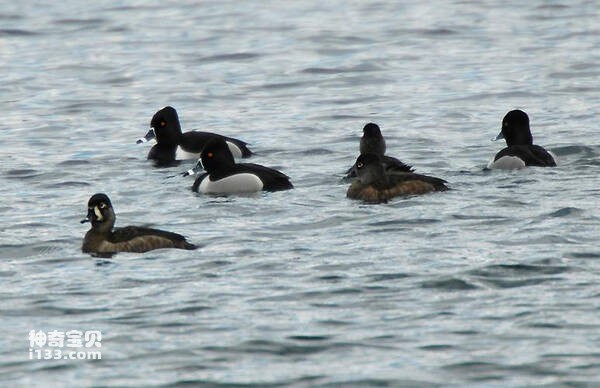Aythya collaris
IUCN
LCBasic Information
Scientific classification
- name:Aythya collaris
- Scientific Name:Aythya collaris,Ring-necked Duck
- Outline:Waterfowl
- Family:
Vital signs
- length:39-46cm
- Weight:490-910g
- lifetime:No textual research information is available
Feature
The head is large, with a bright black and high crown
Distribution and Habitat
Place of origin: Anguilla, Antigua and Barbuda, Aruba, Bahamas, Barbados, Belize, Bermuda, Canada, Cayman Islands, Colombia, Costa Rica, Cuba, Dominica, Dominican Republic, Grenada, Guatemala, Haiti, Honduras, Martinique, Mexico, Montserrat, Nicaragua, Panama, Puerto Rico, Santa Batai Remy, Saint Kitts and Nevis, Saint Lucia, Saint Pierre and Miquelon, Saint Vincent and the Grenadines, Trinidad and Tobago, Turks and Caicos Islands, United States, Bolivarian Republic of Venezuela, British Virgin Islands, United States Virgin Islands.
Travelers: Algeria, Austria, Belgium, Cape Verde, Denmark, Faroe Islands, Finland, France, Germany, Guadeloupe, Iceland, Ireland, Jamaica, Japan, Morocco, Netherlands, Norway, Poland, Portugal, Spain (Canary Islands), Sweden, Switzerland, United Kingdom.
The habitat of the ringnecked duck varies seasonally. During the breeding and post-breeding season, the species prefers freshwater wetlands, usually swamps, all of which are shallow and often near neu
Appearance
Ring-necked ducks are small and medium-sized mallards, with males slightly larger than females. Males are 40-46 cm long and females 39-43 cm long. Males weigh 542-910 grams and females weigh 490-894 grams. Seasonal weight fluctuations are common, leading to gender overlap. The wingspan is 63.5 cm. There is a bright black and towering head, the neck of the chestnut red metal ring is barely visible. In addition to the white belly, flanks and wing mirrors, the male duck has an obvious white wedge on the shoulder extending upward, and the rest of the body feathers are bright black. The female has a shorter crest and a grayish brown plumage, with the darkest crest. The head, chin, and front of the throat are pale, with white circles around the eyes, and the overall appearance is dimmer than that of the male duck. The white wings are very similar to those of the crested duck.
Both female and male ducks exhibit gray stripes on their flight feathers. Adult ducks have distinctive white rings
Details
The Ring-necked Duck (Aythya collaris) has no subspecies.

The ringnecked diver is a migratory bird. Passage from eastern North Dakota and western Minnesota began in early September, peaking in mid-October, with all migration completed by mid-November. It reaches the Atlantic coast of the Middle East in early October, peaks in late November, and declines in December. October to December to Arkansas, Louisiana, the southeast Atlantic Coast and Florida wintering grounds.
Ring-necked ducks migrate in groups, often in small groups of more than ten to dozens of birds, and rarely in large groups of hundreds of birds. During the breeding period, it mainly inhabits freshwater lakes, ponds, and swamps in open areas rich in aquatic plants, and in winter it mainly inhabits large lakes, slow-flowing rivers, estuaries, bays, and estuarine deltas.

The ring-necked diver is an omnivorous animal that feeds mainly on plant food, mainly tuber feed, seeds, leaves and moist soil and aquatic plants (black sedge, grass, wild rice, etc.). They also eat aquatic insects, snails and clams. Often foraging in shallow water where vegetation flourishes. Foraging activities are mainly in the early morning and dusk, during the day more rest on the shore or floating on the open water to sleep. Foraging methods mainly rely on diving to feed, generally in the water is not too deep, and sometimes in the shallow water at the water's edge to extend the head into the water, or tail up into the water to feed.
The breeding season for ring-necked ducks takes place between May and early August, peaking from mid-May to mid-July. Pairings form during the spring migration and remain until late June or early July. When choosing a nesting site, they swim along the open water of the wetland. The female swam to the flooded vegetation to find a suitable spot, while the male watched nearby. They seek dry or semi-arid sites located near water, usually with clumps of vegetation. The female builds the nest, and after three to four days, the nest is like a bowl, and by the sixth day, the nest is strong and clearly shaped. Occasionally the start of nesting will also stop until the third or fourth egg is placed. The nest has curved grass and soft feathers.

Females lay 6-14 eggs per season, with an average of 8-10 eggs. The eggs are ovate, ranging in color from olive gray to olive brown, and have a smooth surface texture. Hatching begins when the nest is complete, and hatching begins the first day the female spends the night in the nest. The incubation period usually lasts 26-27 days. Hatchlings weigh between 28 and 31 grams. The ducklings are covered in soft feathers and are able to track their parents and feed themselves soon after hatching. Young ducks can roam alone after 49 to 56 days and reach independence after 21 to 56 days of hatching. Reproductive maturity is achieved quickly in both sexes, and breeding is possible in the first year, although young ducks may avoid breeding for several years due to the low availability of nesting areas.
Listed on the International Union for Conservation of Nature Red List of Threatened Species (IUCN) for 2020 ver 3.1 - Not Threatened (LC).
Protect wild animals and eliminate wild meat.
Maintaining ecological balance is everyone's responsibility!








